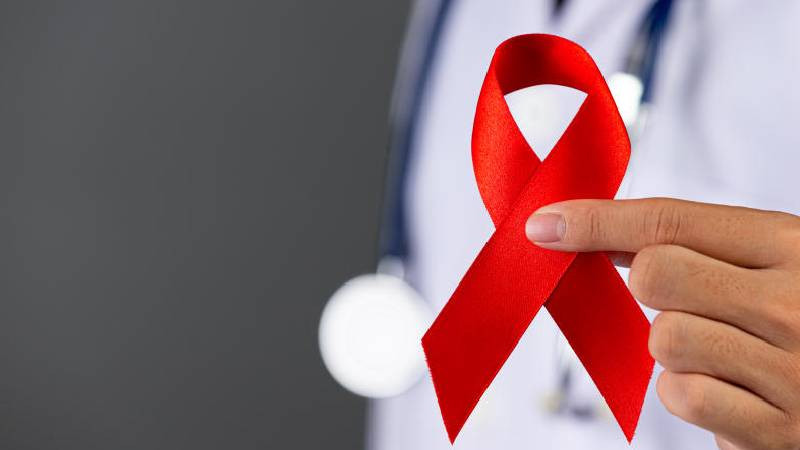
New HIV infections in children and key population is a worrying trend reported in Kenya, as the country works towards ending the disease by 2030.
Data by the National Syndemic Diseases Control Council (NSDCC) reveal that at least 49 per cent of HIV cases are children and young adults.
According to data, 4,464 new HIV infections reported this year are among children aged between zero and 14 years old, out of total infections of 22,154.
Dr Ruth Laibon-Masha, the CEO of NSDCC, said a number of children are born with the disease, whereas some acquire it through breastfeeding.
"Although Kenya has made progress in the fight against HIV, AIDS is not over yet, with a worrying trend of young people infected with the disease," said Masha.
Speaking during the ongoing 2023 Maisha Conference held in Mombasa, Masha said despite high infections, the majority of children default on medication, an issue that is likely to trigger adverse effects of the disease, including deaths.
The CEO attributed defaulting to a lack of knowledge about HIV, and treatment, and that they need support to prevent them from suffering from mental problems.
"We need to give them (children) support which they require so that they become responsible adults. We lied to children, now adolescents, when they learn the truth, they stop medication," said the CEO.
- Alarm as youth quit condoms for tablets in HIV prevention
- Cancer cases, STIs, infertility in young adults linked to unsafe sex
- Why that negative HIV test result could actually be positive
- Understanding HIVAIDS testing and counseling standards in Kenya
Keep Reading
As Kenya works towards ending HIV by 2030, Masha said there is a need to involve men in the fight.
"We need to discuss the role of men in helping end HIV. One of the challenges we get is from breastfeeding mothers. We have not spoken to men, about HIV being transmitted through breastfeeding. These are gaps we must address and bring men," said Dr Masha.
At least 67 per cent (2,989) cases of mother-to-child transmission of HIV are attributed to either pregnancy and breastfeeding women not receiving Antiretroviral treatment, or having their treatment interrupted.
Dr Eliud Mwangi, Country Director of Elizabeth Glaser Pediatric AIDS Foundation (EGPAF) said there is a need to sensitise the community to help stop paediatric HIV.
"We are leaving children behind in the fight against HIV. We can always succeed if we work with communities. Funding is also key in fighting HIV/AIDS in children," said Dr Mwangi.
Further, Dr Masha said even with measures put in place to reduce infections, the number of men seeking diagnosis and treatment according to the CEO is also low, an issue contributing to a high rate of AIDS-related deaths in the cluster.
"The Largest gap is HIV outcomes from men and boys. We are seeing access to diagnosis is lower, and AIDS-related deaths among men are high. If I ask men when was the last time they went. The time they are found in TB clinics, it is at times too late. We have to address this," added Dr Masha.
On his part, Dr Sheikh Mohammed, the Director General for the National Council for Population and Development (NCPD) emphasised the need to end the triple threat as a way of ending HIV infections among adolescents and young adults.
Kenya is also reporting emerging cases of HIV infections in counties that never reported cases like Samburu, numbers that are worrying according to the official.
Data reveals pockets of increasing new HIV infections are being reported in Uasin Gishu, Mandera, Bungoma, and Samburu Counties.
Also present during the conference was Nelson Otwoma, chairperson of the Network Empowerment of People Living with AIDS in Kenya (NEPHAK) pleaded with Kenyans to take HIV tests and enrol for treatment.
Unlike other diseases like malaria, diarrhoea, and TB that present with pain, Otwoma said HIV is 'silent' and requires regular testing to prevent adverse effects.
"We need not hear of history. Decades ago, if you tested HIV positive, it was doom, but today, scientists have made it easy to test and have individuals testing positive live as per God's will," said Otwoma.
Otwoma said despite milestones in the fight against HIV mother-to-child infection is still worrying, an issue that might reverse gains made to guarantee the end of HIV by 2030.
"It is unacceptable that when a woman or girls go through childbirth, they are transmitting HIV to babies. Where did we go wrong?" posed Otwoma.
Dr Raymond Yekeye, program director of the National AIDS Council (NAC) Zimbabwe on his part said stigma especially among the key population namely sex workers, people who inject drugs, and transgender.
Kenya and Zimbabwe share almost the same gains and challenges in the fight against HIV in addition to the number of people living with HIV and AIDS.
The two countries have also achieved the 95; 95; 95 target of ensuring at least 95 percent of the population knows their HIV status, 95 percent are enrolled in treatment and 95 percent have their viral load suppressed.
Yekeye said new infections are worrying gains made in the fight against HIV in Zimbabwe, with at least 17,000 cases reported annually.
"Adolescent girls, young women, and the key population are faced with high challenges in controlling HIV infections," said the official.
 The Standard Group Plc is a multi-media organization with investments in media platforms spanning newspaper print
operations, television, radio broadcasting, digital and online services. The Standard Group is recognized as a
leading multi-media house in Kenya with a key influence in matters of national and international interest.
The Standard Group Plc is a multi-media organization with investments in media platforms spanning newspaper print
operations, television, radio broadcasting, digital and online services. The Standard Group is recognized as a
leading multi-media house in Kenya with a key influence in matters of national and international interest.











